Another Timbre TimHarrisonbre
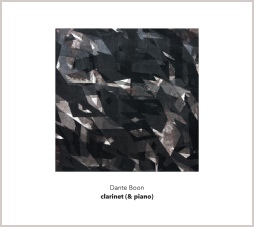
at101 Dante Boon - ‘for clarinet (and piano)’
Three compositions for clarinet (two accompanied by piano) by Dutch composer Dante Boon, played by Jürg Frey.
1 - ‘O’Hare’ (2014) 24’55” Youtube extract
2 - ‘3x’ (2011) 8’19” Youtube extract
3 - ‘Wolken/feld’ (2011) 17’13”
Recorded in Aarau, Switzerland, June 2016
Interview with Dante Boon
The pieces on your CD sound like they were written with Jürg Frey and his particular way of playing the clarinet in mind.
That’s very true. The oldest piece, Wolken/veld, was written for Jürg, and that was the first piece of mine that we played together. The latest piece, O’Hare, was written with him in mind and is a little bit about him. The middle piece, 3x, is a bit different. Other clarinet players have played it very beautifully, but I was always thinking ‘how would Jürg play it? That might be something else’, and eventually he did play it, and it was something else.
So it’s very important to me the way he plays. One thing is that I think he has an avant-garde heart or spirit and a classical mind – or perhaps the other way round. And that’s exactly how I’d like to see myself as well, both as a composer and a performer.
In a way Jürg is a very conventional player. He knows all the tricks from playing Brahms and Mozart and Schumann, making big lines and phrasing beautifully. But at the same time he’s one of the few players I know who always knows where to look for the hidden possibilities that are in the structure. Especially with avant-garde music and the kind of indeterminate music that we make, he always finds some spot where he can do something which is either a surprisingly classical thing to do, or something that is in the structure itself but pushing at the limits. For instance if you give him a piece where he has just two notes to play in ten minutes, then he will either play them very late, or very slowly so that they last a very long time, or he will make a classical phrase out of the two notes, even if they are separated a bit in time.
Antoine Beuger tells a story about one of Manfred Werder’s 2003 pieces, I think, where the musicians only have two notes to play, and Jürg played it in such a way that although the two notes were separate in time, they seemed to belong together. Manfred was sad about it and said ‘How could you do that? You made a phrase’, though in the end I think he was ok with it. But I think that tells you something both about what Manfred is trying to achieve – though he sort of knows that in the end he can’t and it will always be ‘music’ – but it also tells you something about Jürg, that’s he’s always trying to find these places where he can do something, though without going against the grain of the music or against the structure.
So I know as a composer that if you give him just a few notes, he will always look for the bigger structure, the bigger gesture but without playing in a rhetorical way. And that’s exactly how I think the music of John Cage, Morton Feldman and Christian Wolff should be played, with distance but also in a sense romantically. And if you do that it can make the silences more interesting, so that there’s something still going on, the last note is still lingering into the silence and it doesn’t imply a stop. This is typical of a lot of Wandelweiser music, especially Antoine Beuger’s, where you listen to the decay, to the note dying, and it may be that it’s the last one, that it’s gone for ever, but there’s always the possibility, or perhaps the hope, that there will be another note coming and it will go on. I think that’s what Jürg’s playing means to me, this quality of classical, romantic European art, and knowing exactly what this kind of music is about.
So do the pieces on the disc contain elements of indeterminacy, or are they through-composed?
They are always indeterminate in a way. I always start a piece thinking ‘what would happen if….?’ This implies that several things could happen, but I want to focus on the things that I find interesting to try out, and find the boundaries of what can happen. So I try to set up a structure where you can play with these things, and the performer can also decide exactly what will happen.
For instance, O’Hare is just a piece with a set of bars or measures going left to right across the page, but each measure can be in a different tempo. And also the pauses between measures can be longer or shorter or almost not at all. So it gives the players a lot of opportunity to try out different tempi or different ways of playing together. It’s very much a duo in that we play the same music, but for each measure one of the players decides the tempo by playing the second note, and the other has to listen and respond according to how the first player has started. It’s sort of a game about listening, but it’s quite difficult. If you’re not careful it can be hard to keep it moving forward, like I find with some of Christian Wolff’s pieces. It’s great music of course, but Christian Wolff often just gives you the material and hardly ever tells you what exactly to do with it to make it work. So you’re all on your own, and I had the same kind of feeling with my own music in O’Hare. I had written it, but I still didn’t know what to do. Luckily Jürg had some very strong feelings about how to do it, and that helped a lot, and made the piece much faster than I’d set it out to be. I thought it’d be a 30/35 minute piece, but we played it in about 25 minutes. Which is funny because it’s the opposite of what happened five years ago with Wolken/veld. We played it in his concert series in Aarau, but we had rehearsals about a month before, and at the rehearsal I had the feeling that I hadn’t got far with the piece yet. I wanted to write a 20 minute piece and thought I was only half way there, but we played through what I had, and Jürg played it so slowly, held the long notes so long, that we found that it was nearly there and I only had to write a couple more minutes to make it into a 20-minute piece.
But now it’s the other way round, and it’s interesting because I think that’s also true of Jürg’s music – or some of it at least. It’s like he’s going more and more back into the nineteenth century in the way of playing and the way of feeling. For instance, at the same time as we recorded my disc, we also recorded a new long piano piece by Jürg, and for the first time he was saying ‘no, it should be more rubato’ or ‘it needs to be louder’, all these things I used to hear playing classical music at the conservatory. Things like that are creeping into Jürg’s music, where before it would be alright if you just played it very strictly and evenly. But now it feels like he’s moving into new territory, and the way we played O’Hare was a bit like that, less ‘avant-garde’ and more like Brahms.
Do you think there is a wider movement – not encompassing everyone, obviously – but a more general move in that direction within experimental music?
This has been happening for some time already, and especially in Wandelweiser. I think that basically Wandelweiser has always been a romantic movement. Like with the early scores with just a few notes and long silences, the subject is always somehow romantic. For example ‘ins ungebundene’, this organ piece by Antoine, which is just one note and then a long silence, which can last for up to 90 minutes. In a way that’s a very romantic piece because for him it tells you something about death, about decay, about parting, about things that won’t come back, and these are all romantic questions, I think.
And thinking about that avant-garde which I most appreciate in twentieth century music, which isn’t, say, Stockhausen and Boulez, but Cage and Feldman, I think they were romantic composers too. Not the language, but the ideas behind it, and what you want to achieve as a composer. There is other avant-garde music today which sounds much more romantic, more rhetorical, than Cage or Wandelweiser, but I think at its heart it is less romantic. So to me it doesn’t feel like a big change. I know that when Anastassis Philippakopoulos joined Wandelweiser some people were shocked because he was just writing little melodies. That was something new, but everyone figured out pretty quickly that it was part of what everyone is doing. Because the way he does it isn’t really so different from even the most conceptual scores that Manfred makes. It’s all in the same atmosphere.
But the other important thing about Wandelweiser is the sense of community, which you need to be able to proceed. Because a lot of it is pretty radical, even what Anastassis is doing - just writing a little melody and saying that is the piece, that’s quite extreme for a composer. To be able to go on you need a sense of community, and people playing your music. With the normal structures of avant-garde music – like Donaueschingen or Darmstadt or whatever – I think you’d have to be really brave to go on, or you’d have to be an outsider of some sort, and I don’t think it’s very interesting to be an outsider. So I think it’s really good to have other people around who are doing similar things and get what you’re doing, and you can play each other’s music. I think that’s the most important thing about the Wandelweiser group.
So for you it definitely works being part of a larger group rather than just being an individual composer?
Definitely, yes. First of all, just having several other composers who you respect, and they like your music, that’s really encouraging for you to go on with what you’re doing. But also at first I was writing just these tiny little pieces, and I was feeling that this can’t be the proper way to be a composer in the Netherlands, I should be trying to write bigger twenty minute ensemble pieces. I don’t want to be snobbish about this at all, because I do respect other people who are in the system, but I was just a guy writing these tiny pieces, just a few notes with not much happening, and people tended to assume that wasn’t the real thing, and would say, show me a big piece, then we can talk. And then I met Antoine Beuger and sent him some pieces, and he liked them. He didn’t have this other attitude at all. He said yes, a little piece is something, it’s just there and then it stops. And this was very encouraging for me. It’s about what you set out to do, because, for instance, when I was 13 or 14 I was writing twelve-tone music, and often I was thinking ‘what if there were just a handful of notes…?’ and sometimes I tried, and much more so later on, of course. So after I met Antoine I thought, ok then, I can just do it; you can do whatever you want. And then seeing Eva Maria Houben's piano music for the first time, where before I would think ‘I’ve got this thing, it’s not really a piece, but it’s just one note on the piano repeated’, and there it was, something like that, in her music! That helped a lot.
The other thing was that since I was fourteen, I have always been a big John Cage fan, playing and listening to his music, reading his books as well as everything about him. Later on, I particularly liked his late number pieces, and thought I wanted to do something like that, but then I lacked the tools or the confidence or security to actually try doing it. And when I joined Wandelweiser I realised that here is a big group of people who are asking just this: what can we do after the number pieces? What doors do they open for us? And that’s really what’s been happening with this group of people over the past 25 years. I think something happened in Cage’s work between 1987 and 1992, and many Wandelweiser composers just took it further into other realms.
I’m pleased you pick out the number pieces, because for me they were what really re-excited me about Cage when I first heard them in the mid-90’s. I thought whoah! I’d always liked a lot of his music and the boldness of the ideas behind it, but in terms of pure musical pleasure this was a qualitative step up.
That’s good because I think Cage went the same way as what I was saying before. The number pieces are a bit more romantic in a way. He himself said ‘now that Morton Feldman is dead, and I’m old, I can finally write beautiful and soft music’. And for me that’s the same sort of progression as what has happened with Wandelweiser. It was always romantic at heart, but it started out quite radical with very long silences sometimes, and then it moved slowly into other directions, and now in most cases there are hardly any silences any more.
Coming on to the pieces on the CD, can you tell me about ‘3x’? You have several pieces with similar titles (12x, 17x etc). Are they related, and how does it work?
This is actually also in the spirit of the number pieces. One of the many things I like about Cage’s number pieces is that where you have a piece called Five, it will be about the number five in many different ways. There’s always more things going on that just there being five players; it may last five minutes, or the structure of the time brackets is about five, or the intervals may be about the number five, and so on. I think this is such a beautiful way of composing, and in a sense I’m trying to do the same sort of thing with the pieces in this 'times...' series, like 3x. In fact I have more than one piece titled 3x, but it’ll always be about the number three in some way. So in the clarinet solo piece you have three registers, as well as three set timbres, and you also have certain things that come back three times – melodies or patterns of three notes. But the most important thing is the three registers, three different staves that the clarinettist plays with. The middle register stands alone, but the higher and lower registers together form the second voice. And the clarinettist can choose in which order to play the notes in the higher and lower registers. So, for instance, they can start on the first note of the higher register, and then either stay in the higher register, or play the second note in the lower register, and so on. So you have two voices and the way Jürg does it is very interesting. He takes the bass line further and further so you get the feeling that there’s a drone beneath the higher melodies. You could do it by finding a melody between the two registers, but he plays it like a two part piece for one player.
And what about Wolken/veld, how is that structured?
This is a piece where the clarinettist is more like a soloist. There are 27 phrases and – except three or four times – the clarinettist begins and ends each phrase. Also in each phrase the clarinet plays the arch, and the pianist has to fit in, though sometimes he can push the clarinettist a little bit forward. For instance, the clarinettist plays the first note, and the pianist can either play the same note once or play it as a pulse. The pulses are a reference to Jürg’s piano music, where he plays with these repeating notes. But then the clarinettist can only go to the next note when the pianist has stopped playing the pulse. So again there’s an element of playing a game. At the first performance it was like the pianist was saying to the clarinettist ‘yes, yes, go on; you can do it now’. It’s a very encouraging piano part. But it’s an indeterminate score because sometimes the piano can do nothing, and sometimes play the pulse to make a longer measure.
Something else I like is the physical aspect of playing. A duo is a very intimate thing, especially in a case like this where the pianist is responsible for the clarinettist making it to the last note in terms of breathing. So if he plays a long phrase, let’s say he has one minute of breath, and he wants to play the last note beautifully as well, then the pianist has to be aware that he still has three notes to play. So it’s not just a musical consideration of what sounds beautiful and how long can it go on, but there’s also the responsibility to the other player; what does he have to do and is he physically able to do it? And to me that’s something that makes it more than rhetoric, there’s a sense of practicality as well, which makes it more focused, I think.
It sounds a bit like some of Christian Wolff’s pieces, that sense of collaboration and practical solidarity in playing together.
Yes it’s exactly like that, but adding the physical aspect because the clarinet isn’t free to stop playing, whereas in Christian Wolff’s pieces, I don’t think he’d want you not to be able to take a breath! To me that’s what this piece is about: I want it to be legato, which means that we have a joint responsibility to keep it going and not be too long. Instead of using a stopwatch, I’m using this physical constraint as a medium for the timing.
You said that you were a big Cage fan from the age of 14, but I read in your cv that you also worked with a prominent Dutch rock band at a young age, and I wondered how those two things combined, and how you then came back to the classical, and then on to Wandelweiser?
I always put that thing with the rock band in my cv because it’s something that happened, but also because I actually broke off my studies at the conservatory in The Hague to do it. Normally your career starts right after you do your final exam, and then you go out into the world. But for me there’s like a big hole because I did almost nothing in those terms. It’s more like an intermission or a digression than anything else. Except that there is a link because I’ve always also liked the music of The Velvet Underground and Lou Reed, and the music the rock band played was not too far from that. But it was also really nice because it was about the whole act of playing together, improvising and supporting each other. And I think these performance aspects, a sense of timing and working in communication with the audience, I think these did influence my writing later on. But I was 23 and I liked it much better than going to The Hague at least. So it was nice, but before that I was only into classical music as a pianist because I went to the conservatory very early, age fourteen.
So were you a kind of child prodigy?
Yes, in a very unsuccessful way. I was a bit too unfocused to make it work, and I didn’t really want that. But I stayed with my teacher for eight years, so they thought I was good enough to continue, but there was always something that distracted me. I wanted to know what came after Brahms or Debussy or Stravinsky. I’d already learned about twelve tone music when I was thirteen, and I discovered John Cage at fourteen, and I’ve been composing since I was eleven, wanting to know what you could do.
So did you leave the rock band at around the time that you discovered Wandelweiser?
No, there was a four-year gap when I was organising concerts, and playing a lot, just working as a pianist, but still writing too. I remember a performance of a piece of mine for violin and piano in Rome, and the festival was important enough that Ennio Morricone had a piece being premiered there as well. He had two big movie cameras filming the whole thing, I think because it was his classical music, his serious music and it was important to him. But I arrived at the festival quite late, and couldn't attend the rehearsal. It was a piece with long silences; there’d be a phrase and then a counted silence, say a 48/4 bar – exactly how Jürg sometimes does long repetitions, with a 72/4 bar or whatever. This was well before I knew about Wandelweiser, but I was obviously moving in that direction already. So I was sitting in the audience feeling a bit nervous because it was a conventional crowd and I hadn’t heard the piece before. They played the first phrase and then stopped, and I thought ok, this is nice because this will be the first one minute silence. But the musicians just went on; they waited for about two seconds and went on to the next phrase, and then again with the next pause. It was meant to be a ten minute piece, but it was over in four minutes. So that was very interesting. I wrote it down, like 54 beats of rest, but they must have thought ‘no, that can’t be true’, so they just carried on.
I suppose that’s the importance of having a group like Wandelweiser, because that gives you the support and confidence to insist on something like that. You don’t have to be cowed by mainstream attitudes and can insist on what you actually want.
Yes, but most of the time it’ll be Wandelweiser people playing your music anyway, and they know what you want, so you don’t have to say anything. But then with Jürg’s music now he sometimes has to say to people ‘no, no, it can be faster’, or ‘no, that is too soft’. And people say ‘what, too soft? What’s happened?’
But also in those interim years I was organising biweekly concerts with James Fulkerson of the Barton Workshop, which were important for me although almost no-one ever came. There was live streaming, and there was one guy in Utah who’d listen, and he’d say ‘This is great stuff that you’re doing! We don’t get anything like that with the rednecks here in Utah.’ But they were nice because Jim played a lot of James Tenney and Lucier and so on, and we even did a Wandelweiser concert in about 2003, and I organised the whole thing. We played Manfred’s music and Antoine’s, and I thought ‘yes, this is nice’, but then I somehow forgot about it. It’s very strange, I just forgot about it. But then about a year later I met Taylan Susam, who was also a young prodigy and went to some of the Barton Workshop concerts when he was like 16 years old. He got to know me and Samuel Vriezen, and sent us all these Wandelweiser scores, and we thought ‘who is this Jürg Frey?’ Taylan sent us pieces like Jürg’s second string quartet, and he was really important because he contacted Antoine first. Finally, Antoine came to Amsterdam where I met him, and then I went to Düsseldorf and joined the group.
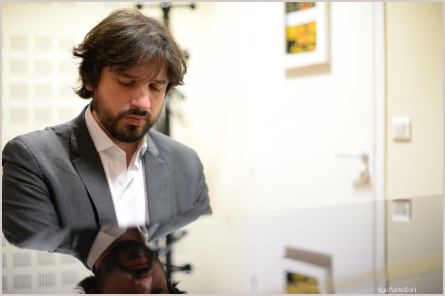
Dante Boon, photo Ugo Ponte
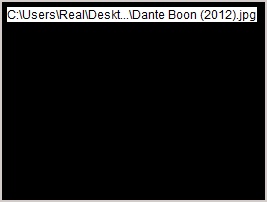
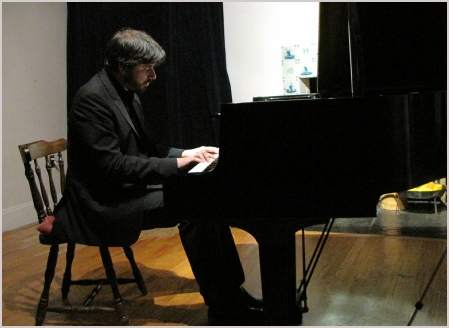
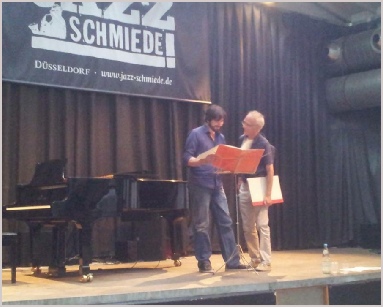
Dante Boon & Jurg Frey
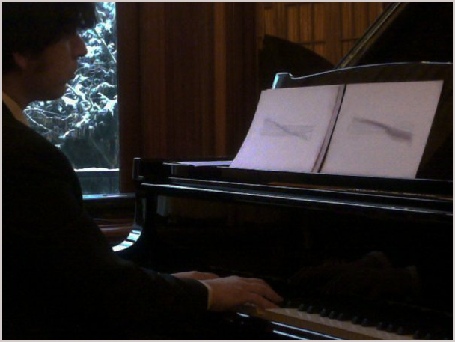
Dante Boon, photo Olga Westrate
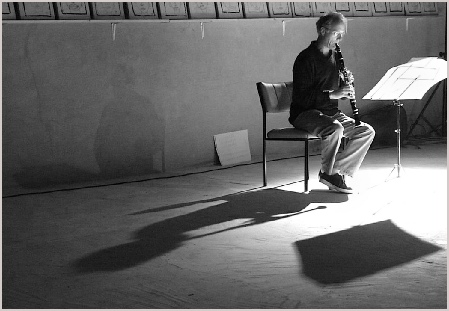
Photo by Dan Joseph
Jurg Frey, photo Joachim Eckl
Reviews
“Without doing an actual count of how many Another Timbre releases feature members of the Wandelweiser group, it is safe to say that they crop up regularly on the label both as composers and performers, with such names as Jürg Frey, Radu Malfatti, Michael Pisaro, Johnny Chang and Eva Maria Houben peppering the label's credits—not just on the monumental 2013 six-disc-set Wandelweiser und so weiter but across the catalogue. So, it comes as no surprise to find Another Timbre entering its second century of releases with this album of three compositions by the Dutch Wandelweiser member Dante Boon, played by Frey on clarinet with Boon himself on piano for two of them.
The three pieces range in length from just over eight minutes to almost twenty-five, together totalling fifty-and-a-half minutes. The longest of the three, the duet "O'Hare," opens the album and straight away it is distinctively by a Wandelweiser composer; its stately, unhurried pace exudes calm and control so that the listener has time to savour every nuance without feeling rushed. The music is ideally suited to Frey, whose phrasing and timing make it feel open and spacious while avoiding the prolonged periods of silence that some listeners complain about with Wandelweiser.
Boon's compositions are not prescriptive but allow players to try out different tempi or ways of playing together. He has rightly praised Frey's note placement and the way his experience and instincts combine so that he paces a piece just right. For "O'Hare," Boon thought it would last thirty to thirty-five minutes; Frey played it in twenty-five, and no-one could argue that it sounds rushed. The clarinet and piano work well together, with no obvious tension between the two.
The shorter piece, "3x," contains three different registers across three staves and gives the player freedom of choice to move between them. Playing alone, Frey uses the structure to play melodically, always maintaining his exceptional good taste and calm. (check out the YouTube clip below for an excerpt.) With "Wolken / veld," Boon returns on piano for another extended piece, one on which both excel again, with Frey getting the lion's share of the attention while Boon's piano adds occasional supporting interjections. As with the other two tracks, the defining features of the piece—and of the album, too—are its beauty and calm control. Altogether, this album is exquisite throughout, without a single wasted note or gesture to be heard.”
John Eyles, All About Jazz
“Quand je pense à Verlaine, irrémédiablement et immédiatement, c'est le mot langueur qui me vient à l'esprit. Ce nom semé à travers de nombreux poèmes de Verlaine, qui caractérise très bien l'atmosphère à moitié romantique propre à la fin du 19e, est aussi le premier auquel je pense en écoutant les trios pièces de Dante Boon présentées sur clarinet (& piano), jouées par Jürg Frey et le compositeur.
Le romantisme et la langueur sont tous les deux présents chez certains compositeurs de wandelweiser, mais tout particulièrement chez Jürg Frey. Et lorsque Dante Boon (également membre du collectif wandelweiser) a composé ces trois pièces pour clarinette, c'était soit écrit pour Jürg Frey directement, soit dédié à ce clarinettiste, ou soit en se demandant comment ce dernier pourrait jouer la pièce en question. Il n'est donc pas étonnant que cette langueur romantique traverse l'ensemble de ce disque, qu'elle traverse ces longues mélodies traînantes à la clarinette et ces accords lumineux disséminés.
O'Hare (2014), 3x (2011), et Wolken/Feld (2011) sont trois pièces composées selon des principes d'indétermination et des structures ouvertes. Elles pourraient éventuellement ressembler à autre chose donc, à des pièces très froides, très silencieuses, mais pas jouées par Dante Boon et Jürg Frey. Chaque ouverture, chaque possibilité offerte par ces compositions est une occasion de glisser une phrase ou une note mélodique, lente, chaleureuse et mélancolique. Le silence est bien présent entre chaque occasion, mais il est absorbé par les résonances mélodiques et l'atmosphère propre à chaque note ou chaque accord. Chaque son apparaît comme un premier bourgeon printannier, ou comme un bourgeonnement hivernal persistant. Il envahit l'espace par sa beauté et absorbe ce qui l'entoure : le silence naturel qui sépare chacune de ces épiphanies mélodiques.
Les deux pièces en duo reposent également sur des jeux d'écoute et de réponse, de réactivité et d'interaction, où la musique progresse en fonction des choix et des propositions de chaque musicien. Et c'est là que l'on se rend compte de la profonde intimité qui lie ces deux musiciens, du respect et de l'admiration mutuels qu'ils se portent lorsqu'ils jouent ensemble. Cette relation n'est pas complètement symétrique, car autant au niveau de la composition que de la réalisation, Jürg Frey semble toujours plus ou moins au premier plan et on ressent assez bien l'influence qu'il peut exercer sur Dante Boon. Mais tout de même, quand ils jouent en duo, aussi dissemblables que puissent être une note de clarinette et un accord de piano, il y a une fusion entre les deux qui fait qu'on finit par ne plus vraiment les distinguer, ils finissent par former une sorte de nuage similaire aux orchestres romantiques, ou tout le monde fait partie d'un tout qui le dépasse (la nature, l'art, le son).
C'est donc cette osmose et cette connexion, cette beauté absorbante et langoureuse, ainsi que cette sensibilité musicale et une virtuosité instrumentale (toute en finesse), qui font de clarinet (& piano) un disque incontournable pour découvrir le travail de Dante Boon d'une part, mais également pour continuer de se plonger dans l'univers magnifique de Jürg Frey.”
Julien Heraud, Improv-Sphere